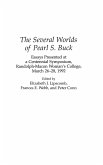Long before the physical advent of Blacks in Europe, Professor Dathorne asserts they featured over and over again in literature as marginalized Others, but rarely were real Blacks present. As English developed as a language, race came into the evolution of the signifiers, so that words like darkness, blackness, and so on became heavily charged with negative connotations. Using travel literature as well as figures on the Elizabethan and Jacobean stage and material from later writers, Dathorne shows how negative elements surrounding Blackness were transferred to Native Americans, to Indians from India, to South Pacific islanders, and others. A provocative analysis for scholars, students, and researchers involved with Ethnic Studies, Cultural Studies, and race.
Bitte wählen Sie Ihr Anliegen aus.
Rechnungen
Retourenschein anfordern
Bestellstatus
Storno








